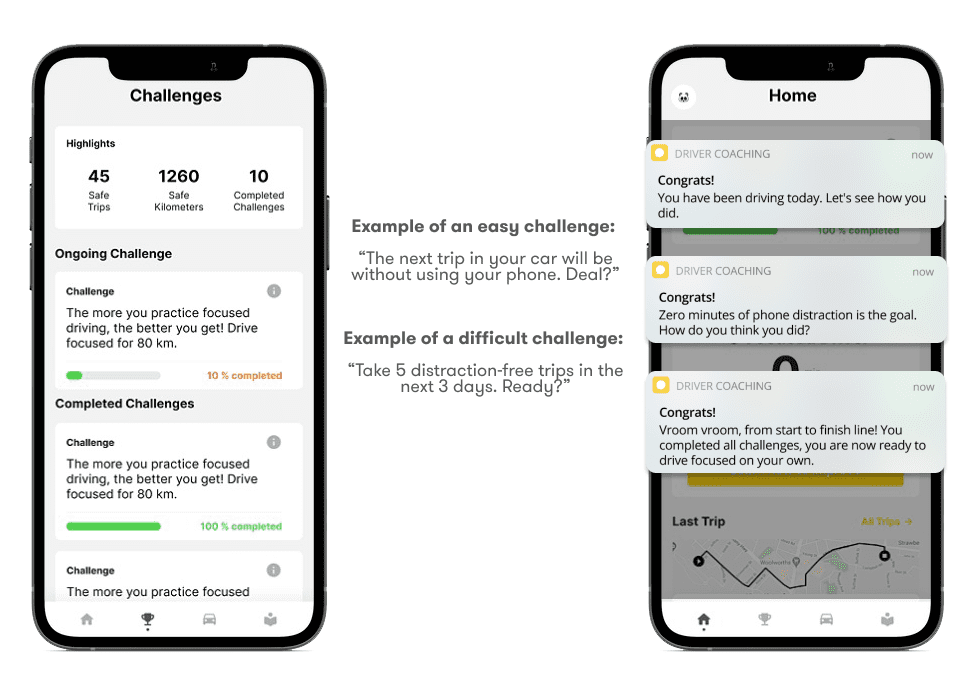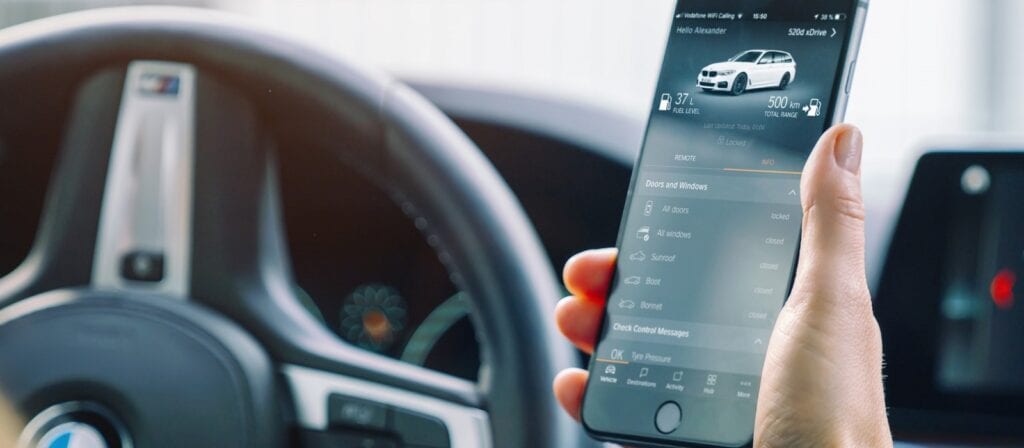Sadly, more than 150 people were killed on Western Australian roads in 2020 and distracted driving was suspected as a factor in almost 13% of fatalities. To help drivers stay focused behind the wheel, Royal Automobile Club of Western Australia (RAC WA) partnered with Sentiance, an intelligence-driven data science and behaviour change company, to end mobile phone-related distracted driving by creating the Safer Driver App.
The Safer Driver app used motion sensor and machine learning technology to detect mobile use while driving; and behavioural science to change bad driving habits and reduce drivers using their phone behind the wheel.
In 2021, more than 800 Western Australians took part in the Safer Driver app trial, which sought to find out how a smartphone app might help put a stop to distracted driving on our roads. The trial encouraged participants to change their phone habits through tailored education, coaching, and challenges, over a 30-day period.
The interactive trial successfully reduced calling, texting and swiping behind the wheel. Around three quarters of users who received coaching reduced their phone use over time, and for those who were also included in the detailed analysis mobile phone distraction decreased significantly , with 50% of app users reducing their distraction by 57% or more.
The success of the trial clearly shows the significant role technology can play in road safety, and how one of the major causes of driver distraction, could also be part of the solution.
The technology behind behavioural change
Isolate, measure, coach: these were the building blocks used to create the Safer Driver app and make it informative, personalised, and user-friendly.
First, the app would isolate the situation where a behaviour occurred; then it measured it; and then coached and challenged the user to change their behaviour.
The app focused on phone usage while driving as the source of distraction.
1. Motion sensing
With each user’s consent, the app collected mobile phone sensor data to determine phone movement, rotational angle, and location.
Along with this raw sensor data, mobile software development kit (SDK) and artificial intelligence (AI) technology were used to detect when a trip starts, classify the mode of transportation during the trip, and attempted to predict if the user’s phone belongs to the driver or passenger.
These are known as Transport Mode Classifiers and Driver/Passenger Classifiers.
This data helped focus on trips where the user was driving a car. Only then could it move to the next phase of detecting potential distraction events.
2. Distraction insights
With the various sources of data gathered, a machine learning model detected when the driver was physically holding their phone. The phone operating system also provided screen on/off and call start/end events.
This information was combined to accurately define and detect three types of distraction events:
- Handheld calling: are they holding the phone while on a call? Or did they hold the phone to make or terminate the call?
- Hands-free calling: was a call made while the phone was mounted or without it being handled?
- Texting & swiping: other types of phone usage without calling. For example, texting, swiping, and content reading.
These three events define phone usage distraction, and each can be displayed to the user as an absolute metric – for the trial, users only saw instances of phone use, but not the specific type. This means the user knows the duration and distance they are distracted for each of their trips. Importantly, this data was not presented while participants were driving.
3. Digital coaching
To change a user’s behaviour, you must be able to intervene and track their progress. A mobile app allows for frequent engagement with users and digital interventions through features such as metric visualisation, feedback text, challenges, and gamification.
The design of the Safer Driver app was based on validated behavioural science theories and applications.
Behaviour change is a dynamic process and participants don’t necessarily start at the same stage, so the app implemented a two-staged approach with:
- Pre-action, where people become aware of their behaviour, the corresponding risk, and tips to change.
- Action, where people are offered challenges to complete and get feedback on their behaviour.

Published August 2022
In-app experience
Pre-action stage
Powerful behaviour change techniques can be implemented through mobile app features. During the pre-action stage, the Safer Driver app displayed detailed trip distraction detection and personalised weekly statistics. Self-monitoring helps people become aware of their behaviour and aspire to change it. Participants also had the option to correct false distraction events and/or where the app inaccurately identified them as the driver.

Customised coaching techniques were provided through Smart Tips on driving and Knowledge Bites related to behavioural change. A catalogue of coaching content based on the observed behaviour was provided to increase awareness of mobile phone related distracted driving risks.
Participants received psychoeducation in the form of Knowledge Bites; small pieces of text aimed at teaching participants the process of behaviour change and providing suggestions to improve their behaviour.
Action stage
Challenges were only introduced to users in the action stage (seven days after installing the app). The challenges set a specific focused driving goal to help the users take action. Challenges started off easy, and became more difficult as users progressed.

Engagement of those receiving coaching:
- Rose in the first two weeks of the trial, reaching over 80% weekly engagement, having used the app at least once that week.
- On average, users interacted with the app 34% of the time after a car trip.
- Users engaged the longest with the ‘Week details’ and ‘Today details’ screens, indicating that participants were monitoring their driving behaviour.
- Seventy-five per cent of participants accepted at least one focused driving challenge.
- More than 1,700 challenges were completed.
Evaluation of the app’s effectiveness
To validate the app, a 30-day experiment was conducted following a rigorous scientific methodology.
A control app was developed to enable comparison against the Safer Driver app; the control app only showed a participant’s journey (origin-destination) and did not provide any other feedback or coaching.
814 Western Australians were recruited for the trial. Through randomisation, 70 per cent were assigned to the Safer Driver app and 30 per cent to the control app.
A ‘relative distraction score’ was used to measure the change in distraction. This was calculated as the total distraction duration (all occurrences of phone use) over the trip, divided by the overall trip duration.
To evaluate the effectiveness of the app, reductions in phone use for the Safer Driver group were compared to the control group at weeks one and four for each participant included in the full behavioural change analysis. To be included in this analysis, participants had to meet minimum levels of: distraction at the commencement of the trial; number of car trips during weeks one and four; and engagement with the app.
After these criteria were applied, 182 Safer Driver app and 86 control app users were included in this analysis.
A statistically significant decrease in the relative distraction score was achieved for the Safer Driver group compared to the control group. While users in both groups had similar levels of phone use at the beginning of the trial, users in the Safer Driver group had a markedly lower score at the end of the trial compared to the control group. In fact, half of the users who received coaching reduced their distraction by 57% or more.
Moving forward
Safer Driver was shown to be an effective behaviour change tool, demonstrating potential for digital coaching apps to help people develop safer driving habits.
With this knowledge, RAC will continue to advocate for, and explore, innovative ways to encourage, educate and support the community in making positive changes to their behaviour, and ultimately save lives and prevent serious injuries on WA roads. For more information, please visit https://rac.com.au/about-rac/advocating-change/reports
Read more about how the app was developed and Sentiance’s behavioural change platform in this case study.





